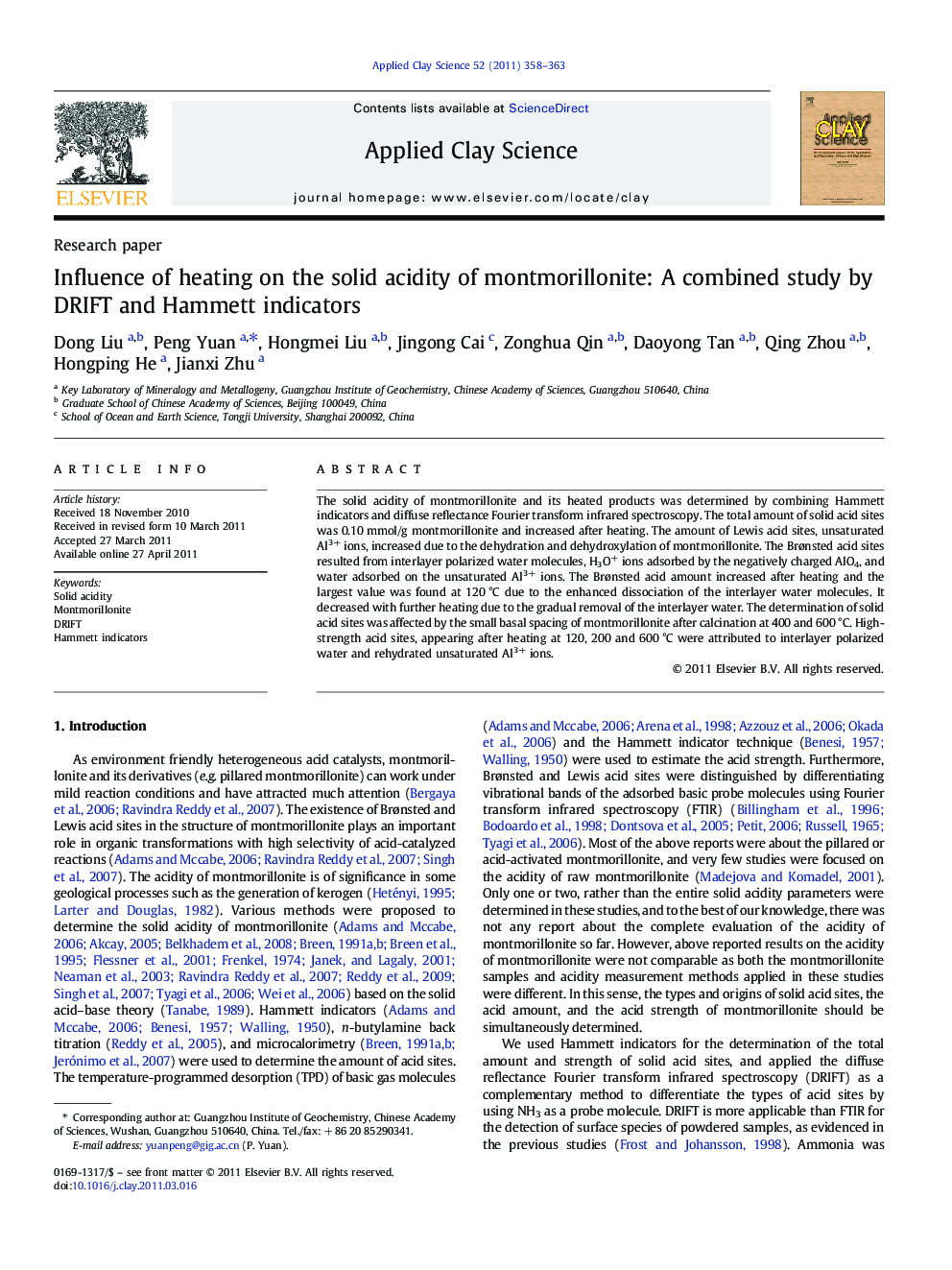| Article ID | Journal | Published Year | Pages | File Type |
|---|---|---|---|---|
| 1695651 | Applied Clay Science | 2011 | 6 Pages |
The solid acidity of montmorillonite and its heated products was determined by combining Hammett indicators and diffuse reflectance Fourier transform infrared spectroscopy. The total amount of solid acid sites was 0.10 mmol/g montmorillonite and increased after heating. The amount of Lewis acid sites, unsaturated Al3+ ions, increased due to the dehydration and dehydroxylation of montmorillonite. The Brønsted acid sites resulted from interlayer polarized water molecules, H3O+ ions adsorbed by the negatively charged AlO4, and water adsorbed on the unsaturated Al3+ ions. The Brønsted acid amount increased after heating and the largest value was found at 120 °C due to the enhanced dissociation of the interlayer water molecules. It decreased with further heating due to the gradual removal of the interlayer water. The determination of solid acid sites was affected by the small basal spacing of montmorillonite after calcination at 400 and 600 °C. High-strength acid sites, appearing after heating at 120, 200 and 600 °C were attributed to interlayer polarized water and rehydrated unsaturated Al3+ ions.
Research highlights► Heating increases the acid amount and strength of montmorillonite. ► The Brønsted and Lewis acid amounts achieve the largest value after 120 °C heating. ► The high-strength acid sites appear after heating at 120, 200 and 600 °C.
